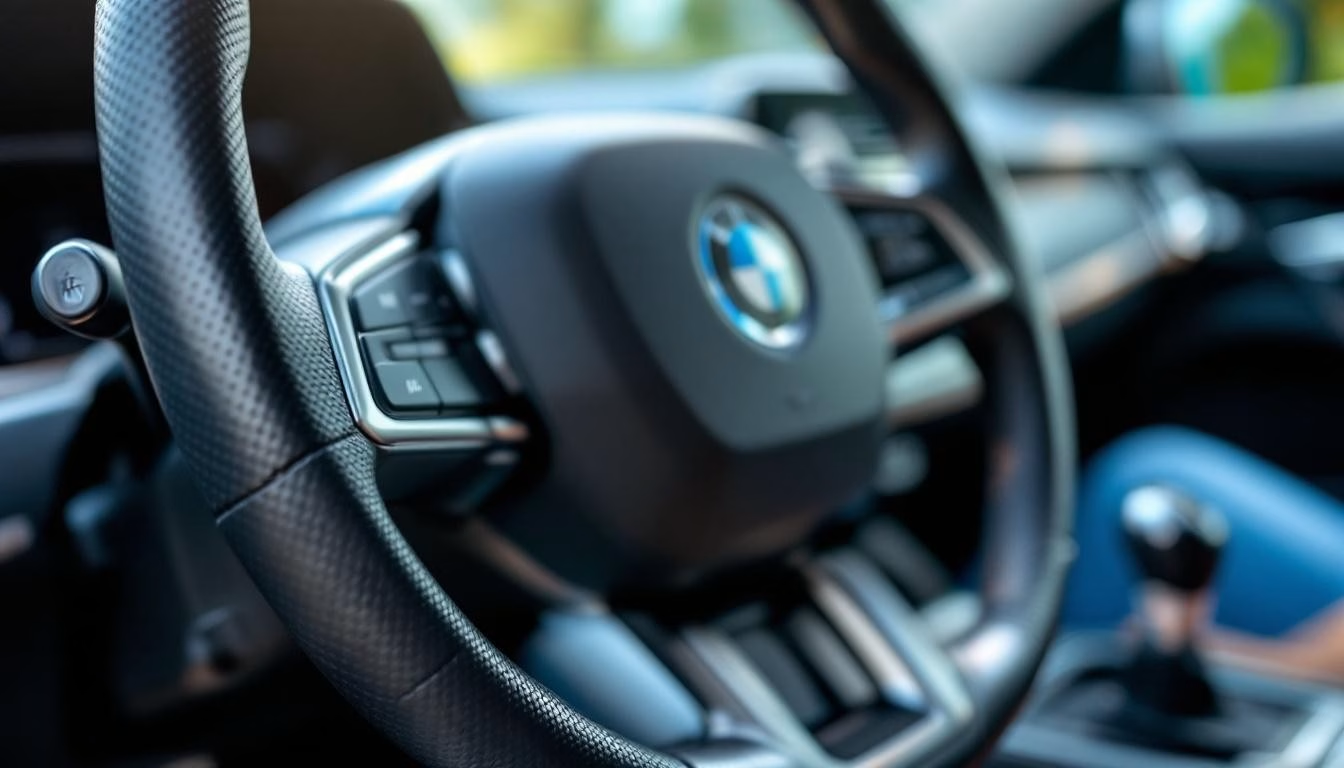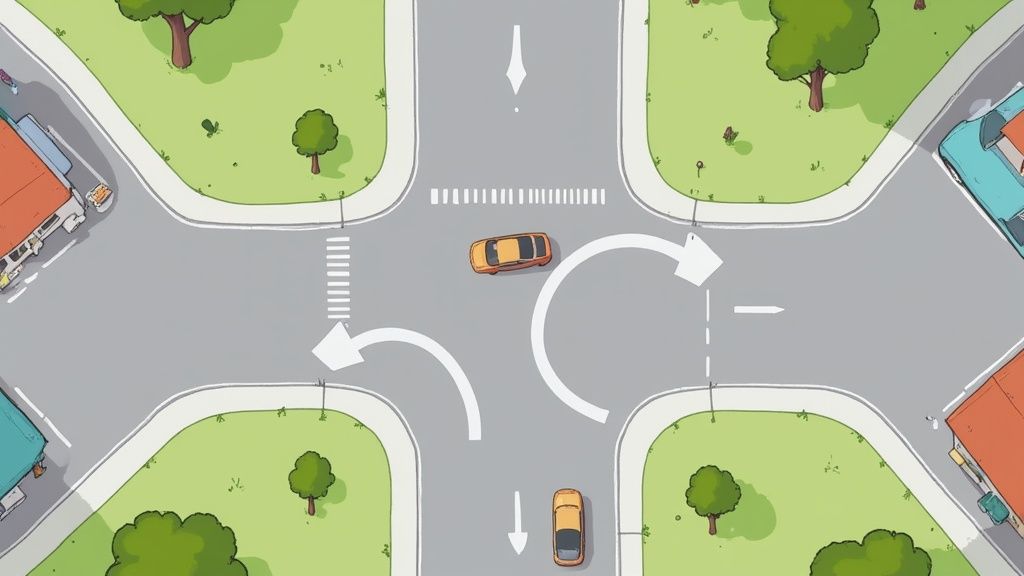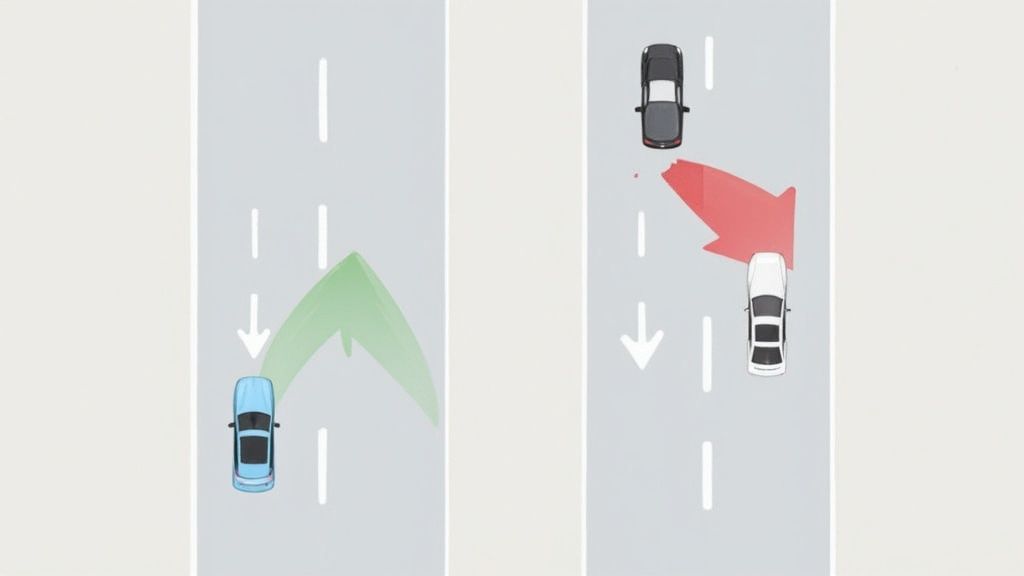Learning to drive can be both exciting and nerve-wracking for beginners. At DriverEducators.com, we understand the importance of a solid foundation for new drivers.
This step-by-step guide to driving lessons for beginners will walk you through the essential elements of your first time behind the wheel. From preparation to basic maneuvers, we’ll cover everything you need to know to start your journey towards becoming a confident driver.
How to Prepare for Your First Driving Lesson
Document Checklist
Your first driving lesson starts with proper documentation. You must bring your learner’s permit. Without it, you can’t legally begin your lesson. Some states require additional proof of identity (such as an ID or passport). If you’re under 18, a notarized Certificate of School Enrollment Form might be necessary. Check your local DMV website for specific requirements in your area.
Dress for Success
Choose your attire wisely for your driving lesson. Wear comfortable, loose-fitting clothes that allow easy movement. Avoid baggy sleeves that could interfere with the steering wheel or gear shift. For footwear, select flat, closed-toe shoes with thin soles. This choice will help you feel the pedals better and prevent slipping. Don’t wear flip-flops, high heels, or bulky boots for driving.
Pre-Lesson Routine
Sleep well before your first lesson. Try to get at least 8 hours of rest to ensure alertness and focus. On lesson day, eat a light meal about an hour before. This practice will keep your energy levels stable without making you feel sluggish. Don’t consume heavy meals or excessive caffeine, which can make you jittery or uncomfortable during the lesson.

Punctuality Matters
Arrive at least 15 minutes early for your lesson. This extra time allows you to meet your instructor, ask initial questions, and calm any nerves before getting behind the wheel. Punctuality shows respect for your instructor’s time and sets a professional tone for your lessons. If unexpected circumstances delay you, call your instructor immediately to inform them.
Mental Preparation
Approach your first lesson with a positive mindset. It’s normal to feel nervous, but remember that every skilled driver once started as a beginner. Take deep breaths if you feel anxious. Prepare some questions for your instructor (about the learning process, local traffic rules, or specific driving techniques). This preparation will help you engage actively in the lesson and make the most of your time.
As you complete these preparation steps, you’ll position yourself for a productive first driving lesson. Now, let’s move on to understanding the basic vehicle controls and safety checks you’ll encounter in your initial driving experience.
How to Master Basic Vehicle Controls
Perfect Your Driving Position
Start by adjusting your seat. You should fully depress the pedals while maintaining a slight bend in your knees. Your arms should have a comfortable bend when gripping the steering wheel. Next, adjust your mirrors. The rear-view mirror should show the entire rear window. Angle side mirrors to minimize blind spots – you should just barely see the side of your car in each mirror.
Decode the Dashboard
Modern vehicles come with numerous dashboard indicators. Familiarize yourself with the most critical ones: the speedometer, fuel gauge, and warning lights for issues like low oil pressure or engine problems.
Perform the Pre-Drive Safety Ritual
Before starting the engine, perform a quick safety check. Ensure all doors are closed and locked. Fasten your seatbelt. Check that all passengers are also buckled up. Adjust your headrest so the top is level with the top of your head to prevent whiplash in case of a rear-end collision.
Master Steering Wheel Control
The NHTSA now recommends placing your hands between 8 and 9 o’clock for the left hand, and between 3 and 4 o’clock for the right hand on the steering wheel. This position gives you better control and reduces the risk of injury if the airbag deploys. When turning, use the push-pull method: push the wheel up with one hand while the other slides up to continue the turn.
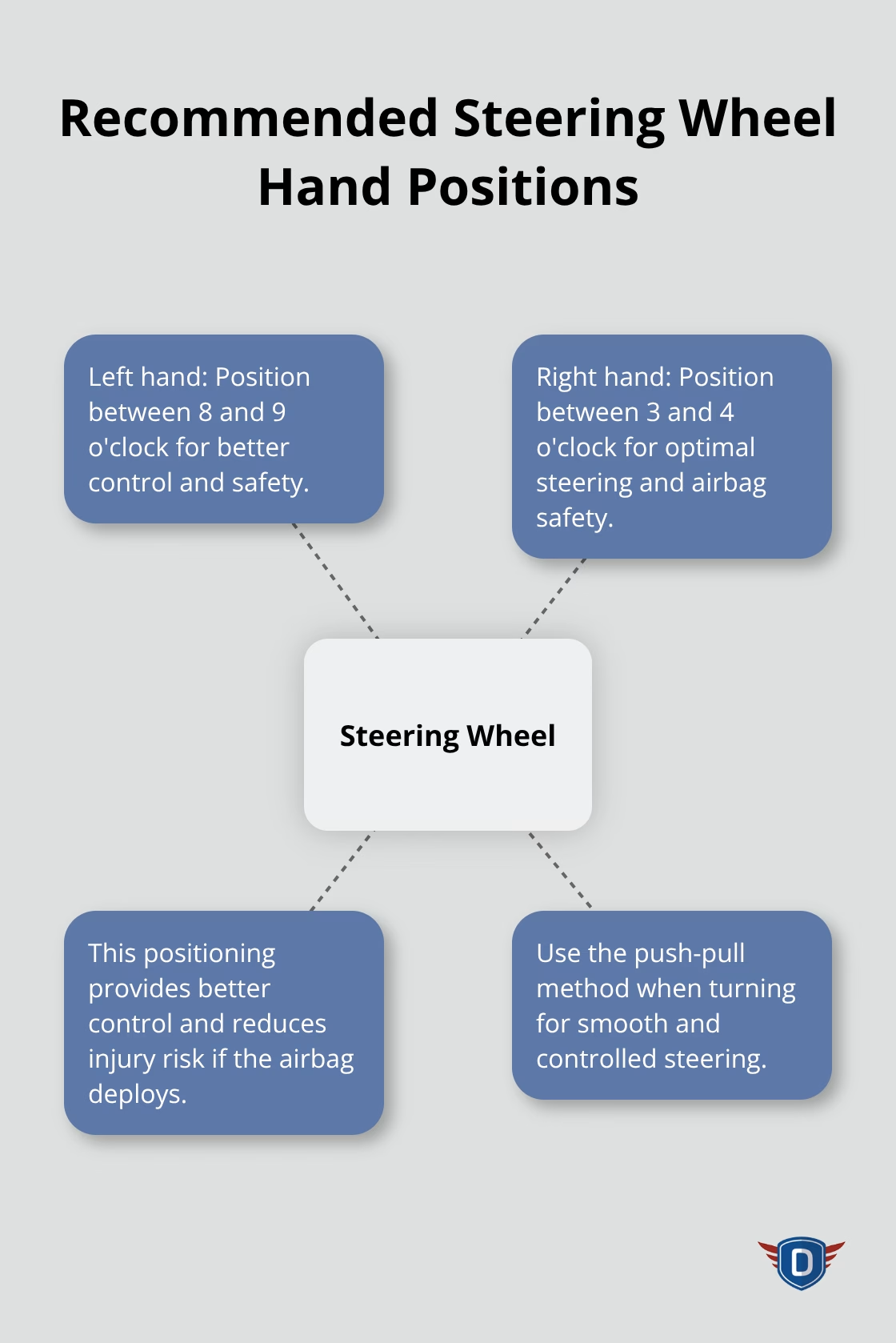
Practice Makes Perfect
The more you familiarize yourself with these elements, the more natural they’ll become, allowing you to focus on the road ahead. Try to spend extra time practicing these basic controls in a safe, stationary environment (such as an empty parking lot) before hitting the road. This practice will build your confidence and muscle memory, setting you up for success in your future driving lessons.
Now that you’ve mastered the basic vehicle controls, it’s time to put them into practice with essential driving maneuvers. In the next section, we’ll explore the fundamental techniques every beginner driver needs to know.
Mastering Essential Driving Maneuvers
Smooth Starts and Stops
The key to smooth starts is gradual acceleration. Apply gentle pressure to the gas pedal, increasing slowly as you move forward. For manual transmissions, release the clutch slowly while applying light pressure to the accelerator. This technique (known as “feathering”) prevents jerky movements and stalling.
When stopping, start braking early and apply steady pressure. Try to come to a complete stop smoothly, without jolting passengers. Practice in empty parking lots to perfect your timing and pressure control.
Navigating Turns and Corners
Proper steering technique is essential for safe turning. As you approach a turn, reduce your speed and use the push-pull method on the steering wheel. For right turns, push up with your left hand and pull down with your right. Reverse this for left turns.
Look through the turn to where you want to go, not at the curb or oncoming traffic. This technique (called “visual targeting”) helps maintain a smooth path through the turn. Signal at least 100 feet before turning in most states.
Lane Changes and Merging
Changing lanes safely requires awareness and proper timing. Always check your mirrors and blind spots before signaling your intention to change lanes. The SMOG method (Signal, Mirror, Over-the-shoulder, Go) is an effective technique many driving schools teach.
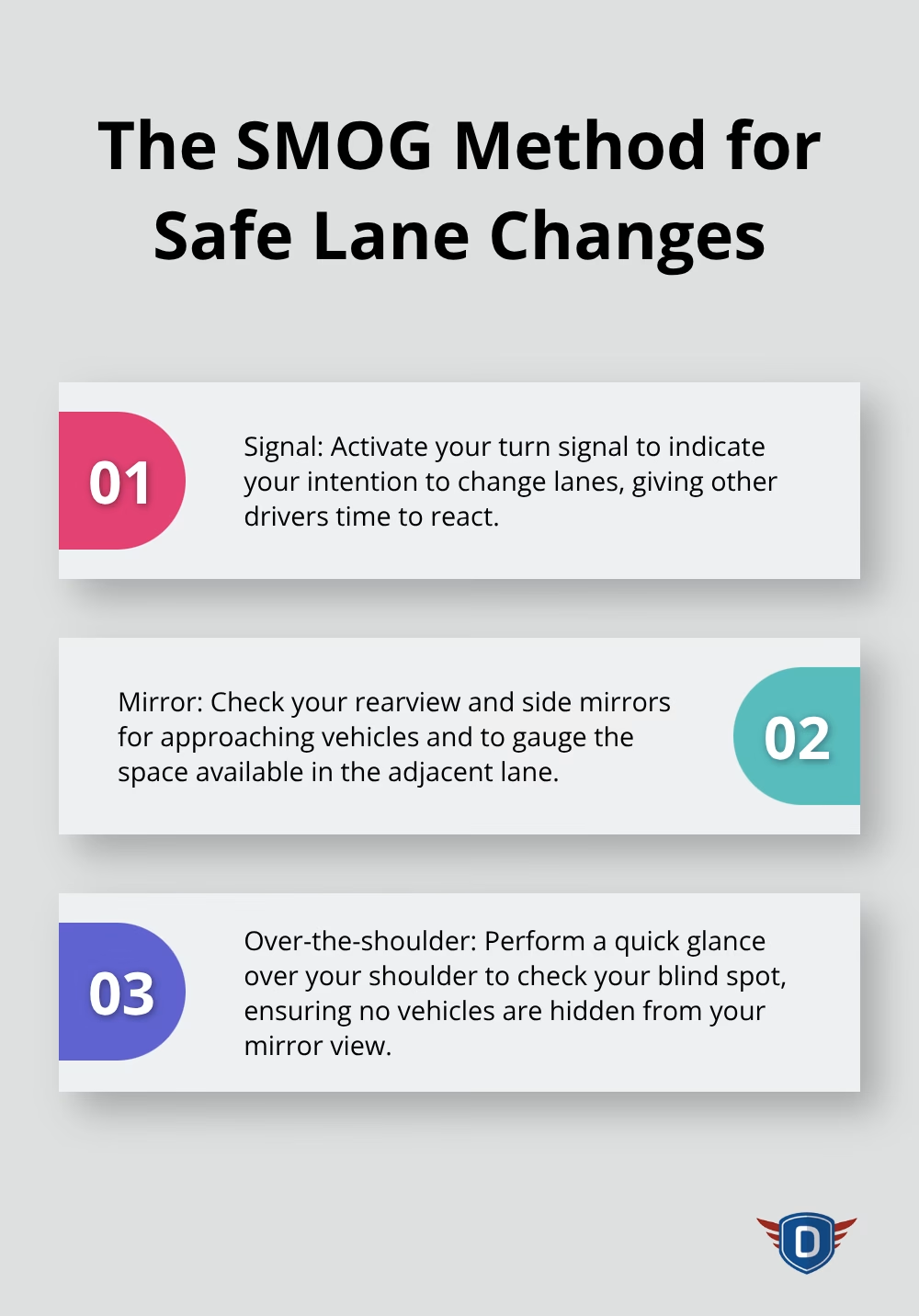
When merging onto highways, match your speed to the flow of traffic. Use the acceleration lane to its full length if necessary. Look for a gap in traffic that’s at least four seconds long, and smoothly move into it.
Parking Techniques
Mastering different parking techniques takes practice. For parallel parking, position your car parallel to the car in front of the space, about two feet away. Back up slowly, turn the wheel sharply towards the curb when your rear wheel aligns with the other car’s rear bumper. Straighten out and pull forward to center your car in the space.
For perpendicular and angle parking, approach slowly and use your side mirrors to gauge your position. Turn into the space when your front doors align with the rear of the adjacent car. Practice these maneuvers in empty lots to build confidence before attempting them in busier areas.
Final Thoughts
Becoming a skilled driver takes time and practice. Our step-by-step driving lessons for beginners provide a solid foundation for safe driving habits. Patience is essential as you learn; mistakes are part of the process and should not discourage you.
Regular practice sessions with professional instruction and supervised driving will enhance your skills. We recommend enrolling in a comprehensive driver education program like the one offered by DriverEducators.com. Exposure to various driving conditions will build your adaptability and confidence behind the wheel.
The ultimate goal extends beyond passing a driving test; it’s about becoming a lifelong safe driver. Continuous improvement and refreshing your knowledge of traffic laws are key to responsible driving. Stay focused, drive safely, and enjoy the independence that comes with your new skills.

